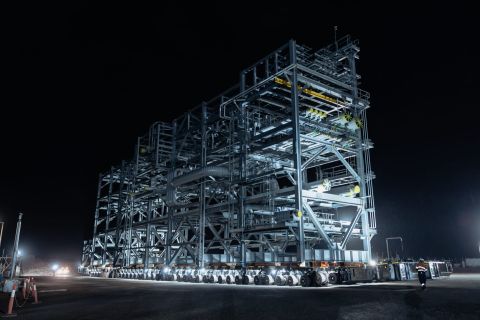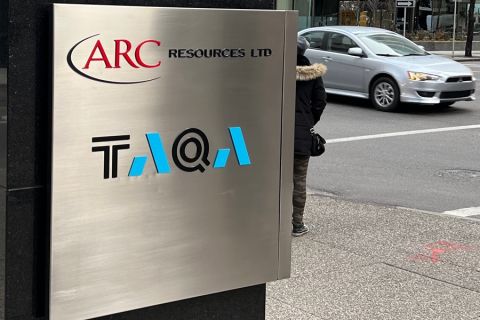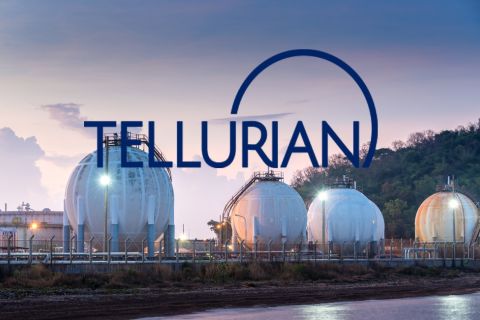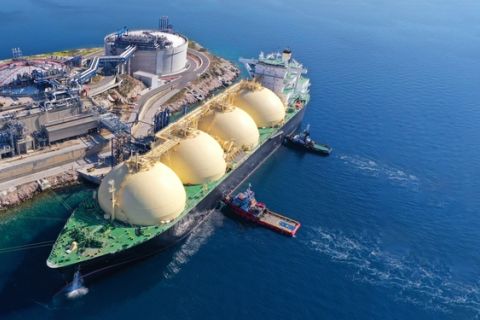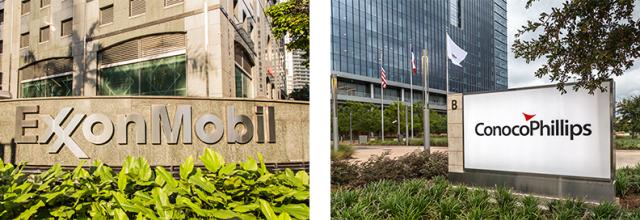
Moves being made by Exxon Mobil Corp. and ConocoPhillips highlight some of the trends shaping majors’ strategies—and those of U.S. majors in particular. Both companies have been on a push to sell assets worth billions of dollars, while stepping up spending and drilling in certain core regions that they expect to drive growth in the coming years. Moves by both firms also illustrate how the mature North Sea has fallen out of favor, as their focus shifts increasingly to domestic assets, and in large part to shale.
In August, Reuters reported that Exxon Mobil was holding talks on a sale of some or all of its UK North Sea assets, citing sources familiar with the matter. No further details of such a move have emerged as yet, but on Sept. 26, the major announced a deal to sell its Norwegian North Sea assets to Var Energi for $4.5 billion. This forms part of an Exxon Mobil plan to sell about $15 billion worth of “non-strategic” assets by 2021.
The company is also reported to be seeking to certain assets in the U.S. Gulf of Mexico, Malaysia and Australia’s Bass Strait.
RELATED:
- Big Oil Talks Big Energy In Transition
- Weak Oil Prices Hit Exxon Mobil’s 3Q Earnings
- BP’s Bernard Looney Takes Oil Major Into Energy Transition
- From OGI Editor-In-Chief: Your License To Operate Might Be Expiring
ConocoPhillips, for its part, said on Sept. 30 that it had completed the sale of its UK assets to Chrysaor E&P for $2.765 billion.
“Selling low-growth, high-cost, high-reinvestment assets has always been a part of majors’ portfolio management. These actions are no different,” a Morningstar equity analyst, Allen Good, told Hart Energy.
“Given the quality of each company’s portfolio, the limited reinvestment opportunities in these regions were not competitive,” he said.
Consultancy Rystad Energy’s head of upstream research, Espen Erlingsen, agreed that it makes sense for majors to be exiting mature regions as they focus on new emerging areas. “We have already seen similar behavior among the other majors,” he told Hart Energy.
“Recently Shell sold its assets in Denmark, Eni spun off its fields in Norway and Chevron sold out of UK. This is a general trend that the American companies are focusing more domestically and less internationally,” he added.
Looking To Shale
Shale is set to account for a growing proportion of production for both Exxon Mobil and ConocoPhillips. Exxon Mobil, in particular, has stood out in the Permian Basin this year, ramping up drilling while independents have felt compelled to act with more restraint.
The major is planning to raise its Permian output above 1 million barrels of oil equivalent per day (boe/d) by 2024. This would mark a rise of nearly 80% from the first quarter of 2019. It is already by far the most active driller in the basin, bucking the trend of an overall decline in the active rig count from 493 in November 2019 to 415 in the first week of October.
There has been speculation that Exxon Mobil could seek to take over a Permian independent as part of its drive for expansion in the basin. Analysts from investment bank Morgan Stanley recently identified Pioneer Natural Resources and Diamondback Energy as potential takeover targets for Exxon Mobil. It is not thought to be the only player that may attempt to snap up other operators in the Permian, though.
“Permian consolidation is possible, although any take-outs will be expensive. Total for example has ruled out making any deals,” Good said. “Exxon and Chevron could be buyers if valuation is right. You might see more mergers of equals among smaller E&Ps to gain size and reduce cost.”
Erlingsen agreed that Chevron may pursue Permian acquisitions. “Exxon has already done several transactions in Permian, with the BOPCO transaction in 2017 as the largest,” he said. “Perhaps Chevron is a hotter candidate to acquire acreage in Permian. After its failed Anadarko acquisition the company might look for new targets.”
Exxon Mobil—and also Chevron—has the benefit of pursuing a longer-term strategy in the Permian without coming under the same amount of shareholder pressure as smaller players.
“Exxon isn’t worried about the next 1-2 years in the Permian but the next 10,” Good said. “They’re drilling a lot now, but also building out infrastructure, and don’t expect growth to really accelerate until 2021. They are not susceptible to the same pressures smaller E&Ps might face, which has driven the decline in rig counts.”
Unconventional And Conventional
For ConocoPhillips, meanwhile, shale growth is anticipated to come mainly from the Eagle Ford shale, though it also has acreage in the Permian. Unconventionals accounted for 25% of the company’s output—or around 300,000 boe/d—in 2018, according to a recent Morningstar report, and this is set to rise to 400,000 boe/d by 2020.
ConocoPhillips has previously said its major portfolio restructuring would be almost complete with the closing of its UK North Sea asset sale, but it continues to shed non-core acreage, including in shale plays. The company confirmed to Hart Energy that its Austin Chalk assets in Louisiana are now for sale, having announced on Sept. 30 that it had discontinued exploration activity in that region following disappointing results.
ConocoPhillips stands out from other majors thanks to a significant conventional position in Alaska, where it continues to push into frontier areas as well as retaining legacy assets.
“ConocoPhillips is a leading operator in Alaska in all departments—production, resources and acreages,” a senior Rystad upstream analyst, Aditya Saraswat, told Hart Energy. “In the recent past, the operator has reduced the cost of supply by adopting enhanced oil recovery and horizontal drilling technologies, and lowering intervention costs. Rystad Energy estimates that the new strategy has succeeded in reducing the base production decline and lifting costs from the legacy assets.”
Alaska now accounts for the largest proportion of ConocoPhillips’ spending on conventionals, at $1.2 billion, according to Rystad. This is just below what the company is spending on the whole of the Lower 48 states. The company continues to target new developments in Alaska, and recently announced it would drill seven new exploration wells in the Natural Petroleum Reserve-Alaska (NPR-A) this winter. The wells will be focused on the prospective Harpoon area and on better delineating the Willow prospect, which was discovered in 2017.
“Rystad Energy estimates the new [Alaska] developments are on track to meet the company’s production targets by 2025,” Saraswat said. “However, future exploration success will be the key to achieve the company’s target net production of over 300,000 boe/d by 2028.”
Despite both Exxon Mobil and ConocoPhillips turning their attention to onshore U.S. operations, offshore regions elsewhere in the world remain attractive prospects. Indeed, one of the areas outside the U.S. where Exxon Mobil is still particularly active is offshore Guyana, where it has made a string of discoveries.
“Offshore remains attractive, it’s just a question of where,” Good said.
He identified the Gulf of Mexico and West Africa as regions that were still generating high returns from brownfield expansions, adding that areas including Brazil, Guyana and East Africa were attractive for new exploration.
“There are many frontier basins the majors continue to explore as well. The North Sea is just somewhat less attractive,” he said. “However, we’ve seen firms like Total and Equinor make acquisitions. It really just depends on the size and position of the existing portfolio.”
Recommended Reading
Association: Monthly Texas Upstream Jobs Show Most Growth in Decade
2024-04-22 - Since the COVID-19 pandemic, the oil and gas industry has added 39,500 upstream jobs in Texas, with take home pay averaging $124,000 in 2023.
Woodside’s Pluto Train 2 Nears 2026 Start Up with Modules Delivery
2024-02-21 - First 3 of 51 modules have arrived on site in Western Australia for the onshore LNG project that will receive gas from the offshore Scarborough project.
ARC Resources Adds Ex-Chevron Gas Chief to Board, Tallies Divestments
2024-02-11 - Montney Shale producer ARC Resources aims to sign up to 25% of its 1.38 Bcf/d of gas output to long-term LNG contracts for higher-priced sales overseas.
FERC Approves Extension of Tellurian LNG Project
2024-02-19 - Completion deadline of Tellurian’s Driftwood project was moved to 2029 and phase 1 could come online in 2027.
New Fortress Starts Barcarena LNG Terminal Operations in Brazil
2024-03-01 - New Fortress’ facility consists of an offshore terminal and an FSRU that will supply LNG to several customers.



